Dan Brown’s book, “Angels and Demons” flashed through my mind as I crossed the Ponte Sant’Angelo one morning in Rome. Ten Baroque statues of angels line the bridge, each bearing a symbol of the suffering and death of Christ. Designed by Bernini in the early 17th century, they look down demurely at passersby from their travertine marble perches. They feel like a silent presence, outwardly still but internally watchful.
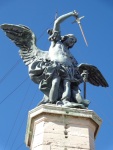
Castel Sant’Angelo awaits at the end of the bridge. Reminding me of a cross between a king’s crown and a wedding cake, it stands majestically among the monuments of Rome. Packed with history, it has been here for 2,000 years. Emperor Hadrian had this huge cylinder, built in 139 AD, as a mausoleum for himself and his family. However, for nearly 100 years after Hadrian’s death, it continued as the burial grounds for succeeding emperors as well, ending with Caracalla 217 AD.
Over the past 2,000 years, Castel Sant’Angelo has been more than a funerary monument. It was used as a fortified outpost, a notorious prison complete with a torture chamber, a palace for the popes embellished with Renaissance art, the keep of the Vatican treasury and finally a museum.
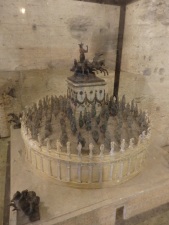
What I discovered as I toured the fortress, now the Museo Nazionale di Castel Sant’Angelo, fascinated me. At the time of Hadrian, the mausoleum was topped by a garden of Cypress trees and crowned by a golden quadriga, a huge statue of him riding a chariot. It was the tallest building in Rome.
In ancient Rome, tombs were not allowed inside the city limits. This pertained to the emperors as well, even though they were looked upon as gods. So Hadrian chose a commanding position just outside the city walls and across the river. Even today, it holds a stately presence among the many monuments of Rome.
It helps to get a bit organized so I’ve included a brief overview of the 6 levels of Castel Sant’Angelo:
Level 1- Begins the winding Roman construction ramp, the Courtyard of the Shooting and the Chapel of the Condemned.
Level 2- Hall of Urns, former prisons, and storerooms
Level 3- Military displays, papal apartments, the courtyard of the angel (Cortile dell’Angel), which houses the former archangel, Hall of Justice
Level 4- Exquisitely decorated papal apartment with sumptuous frescoes by artists of the school of Raphael (Luca Signorelli, Carlo Crivelli), archaeological gallery, historic Armory.
Level 5- Treasury, Library
Level 6- The Angel Terrace providing amazing views of Rome, especially the Vatican and St. Peters Basilica

Upon entering, an old cobbled road winds around the base. This fortress has a lot of stairs. One leads down to the original Roman floor and follows the route of Hadrian’s funeral procession. There is a bridge that crosses the room where the ashes of the emperors were kept. The urns and ashes were scattered by Visigoth looters during a sacking of Rome in 410.

The Sala del Tesoro is the treasury where the Vatican wealth was kept locked up in a huge chest. The rooms are ornately decorated with rich frescoes and marble.

The Passetto di Borgo is intriguing in itself and historically fascinating. You have probably heard of an elevated fortified corridor commissioned in 1277 AD by Pope Nicholas III leading from Vatican City to the Castel Sant’Angelo (thanks to Dan Brown). The passage served as an escape route to the Castle for popes during times of war and sackings.
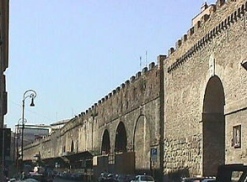


Enjoy a gallery of photos from my day spent inside this massive fortress. It would take a book to explain everything. One of several things that impressed me was the circular walkways leading up and down within. Wide and tall, they were lit with the golden light from wall lamps. Effectively mysterious…
The Angel Terrace offers dazzling views of Rome from several directions. The wind was gusty so walking from one end to the other for a view was slightly challenging.
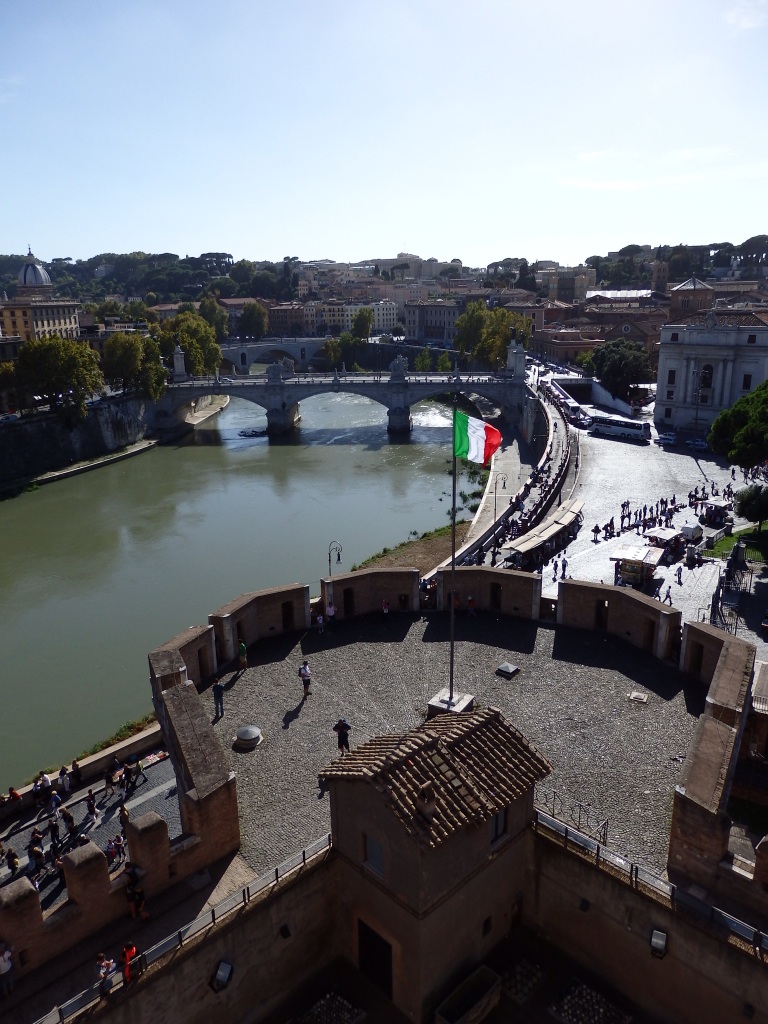
It’s from here you can get up close to the majestic Archangel Michael, who stands on the very top. As I gazed up into his face, I had no doubt that he means business.
So what’s the deal about the angel Michael? As the story goes, in the year 590, the Archangel Michael appeared above the mausoleum to Pope Gregory. The angel sheathed his sword, and the pope took it as a sign that the plague was ended. It soon became a fortified palace renamed the castle of the holy angel.
Close beside the Archangel Michael is a large bell, called the Bell of Mercy. Beginning in the mid-1700’s it was wrung to inform the people of capital executions of the prisoners while a prison.
As the grand finale, enjoy some views of Rome taken from the Angel’s Terrace


**Resources used are from the National Museum of Castel Sant’Angelo**
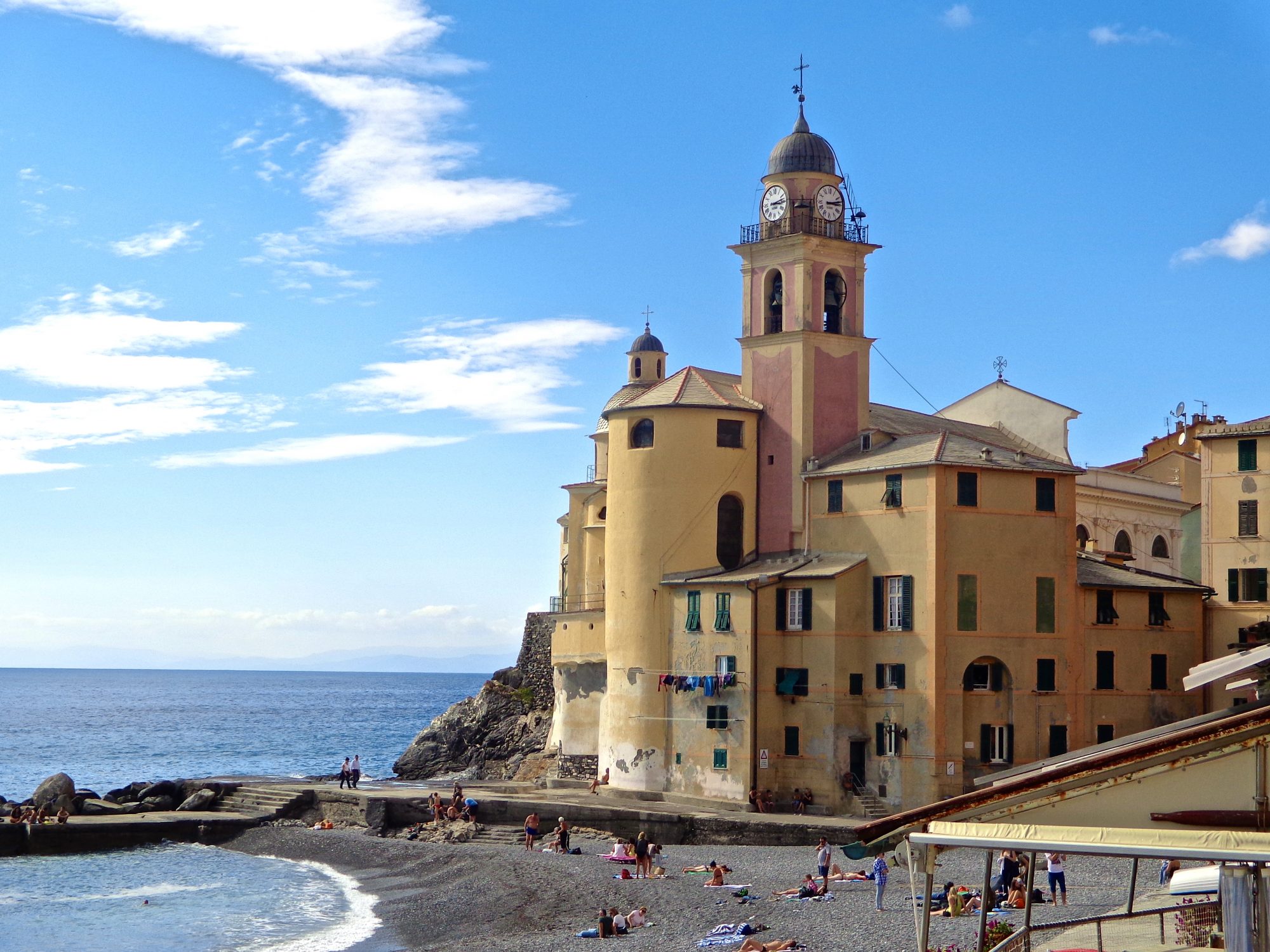

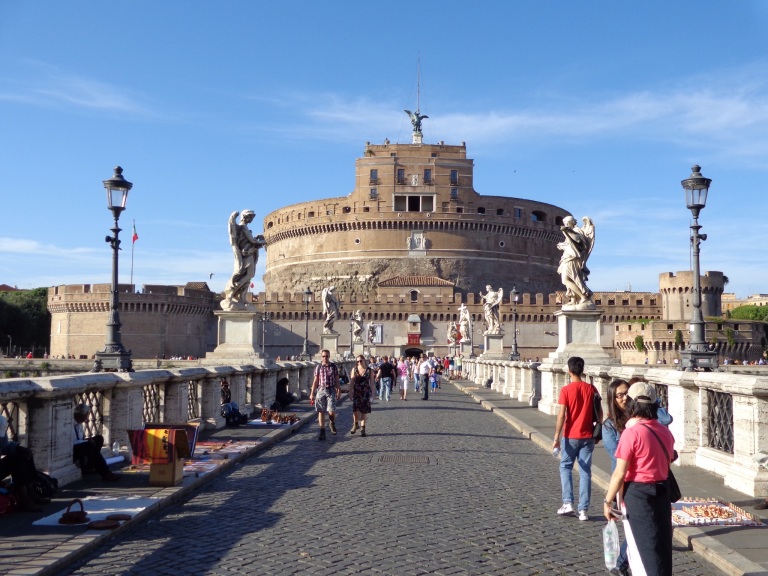



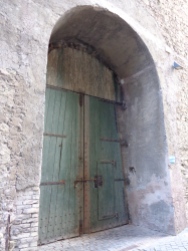
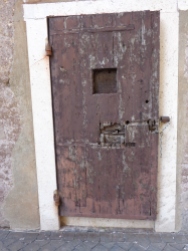








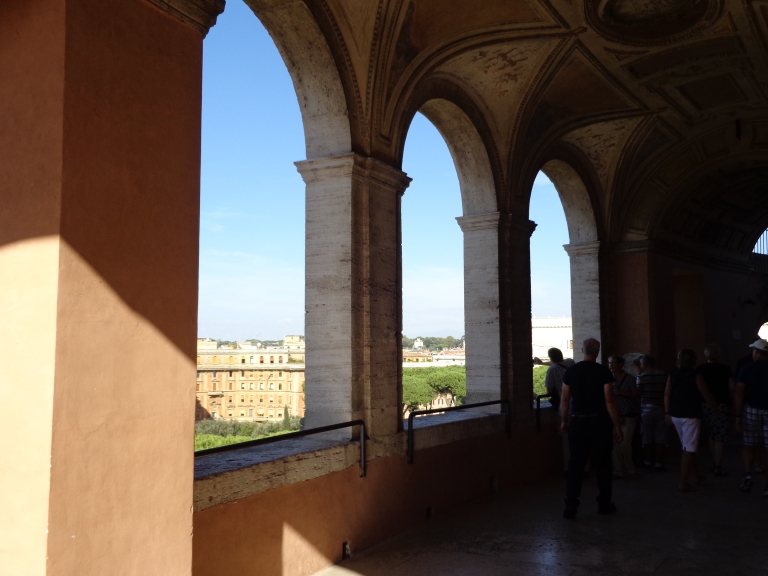

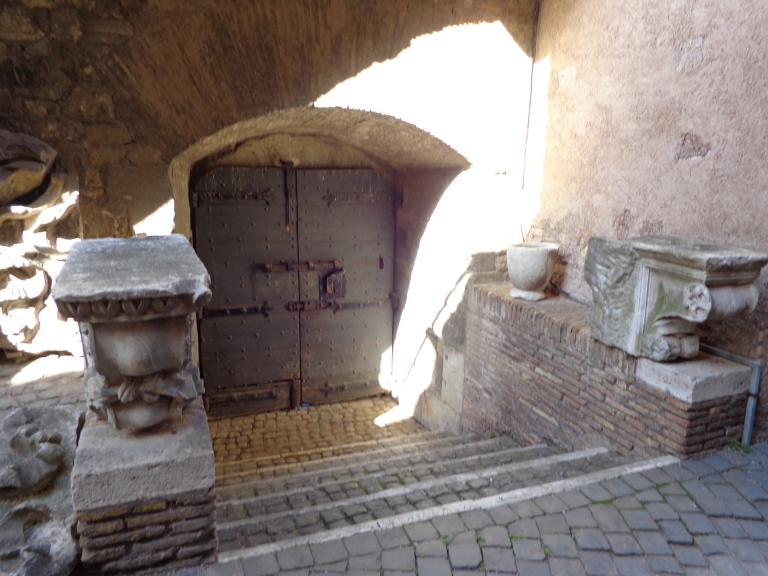
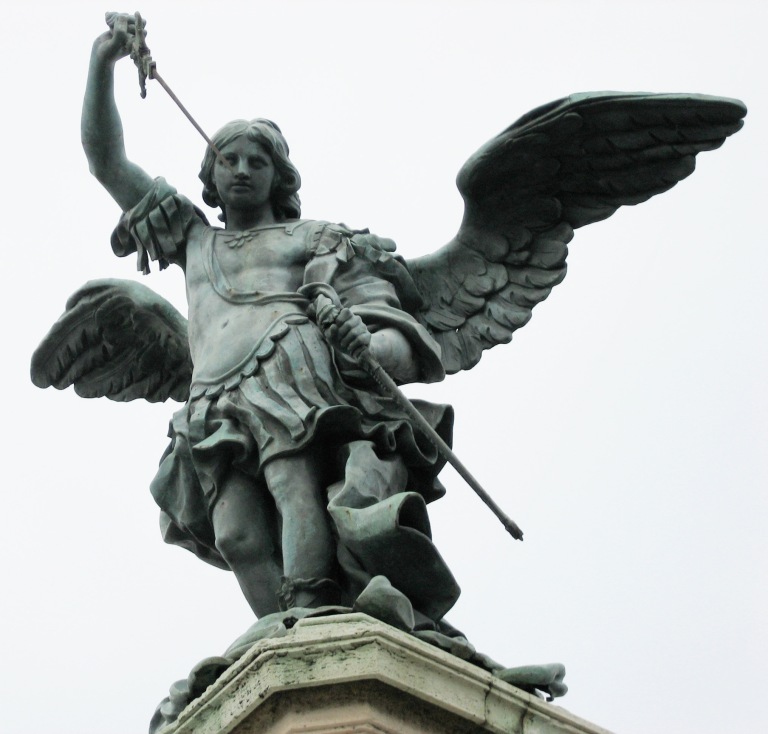
I just loved your post. Brava!😊
LikeLiked by 1 person
Thank you!!
LikeLike
you’re welcome😊
LikeLike
I love this castle and the great views from the top. The bridge of angels is also amazing!
LikeLiked by 2 people
I’ve found myself standing at the top taking in those views for what seems like hours. One time the wind blew so strong, I thought I’d be blown over so I retreated inside to safer ground.
LikeLike
I loved the castello! It’s also a great way to see how much the ground level has changed since Hadrian’s time
LikeLiked by 2 people
It is amazing! Imagine everything that old castello has witnessed in its lifetime:)
LikeLiked by 1 person
visiting the “castle” was one of my favorite explorations in Rome—I would think of the pope’s fleeing St Peter’s through the secrect passages during various invasions.
Your images are wonderful as always and I love your sharing Susan as you always whet my whistle for more!!
LikeLiked by 2 people
Thank you, Julie…your imagination is a lot like mine😊
LikeLike
I remember walking past it 5 years ago and wanted to go in but ran out of time. It is an amazing building. Then again, what isn’t in Italy!
LikeLiked by 2 people
So true! Rome is insatiable and this Castello is one of many.
LikeLiked by 1 person
Thanks for the great photos. They bring back happy memories.
LikeLiked by 2 people
Great post Susan and some stunning pics. I did a night time tour last week and it is an amazing place! The Passetto was open at this time so very much an Angels and Demons link!
LikeLiked by 2 people
Thank you! I would love to do a night time tour…esp. the Passetto. My imagination would run wild, i’m sure:)
LikeLiked by 1 person
We stayed very close to Castel Sant’Angelo so got to enjoy views of it from my room and many walks across the bridge. But we didn’t have a chance to tour — just not enough time. From your article, I know that it will be a must-do on my next visit. The Passetto di Borgo fascinates me — just think about those popes hurrying along it.
LikeLiked by 2 people
Hi Cathy, yes I totally agree about the Passetto! Intrigue at its best for sure. Thanks for the comment, and for sharing:)
LikeLike
Great post. Wonderful building. Terrible book. 🙂
LikeLiked by 2 people
Hi Marie, glad you liked it. I must confess that I did get caught up in the book….and it certainly brought a lot of the Castel Sant’Angelo to life. But I get you….thank you for stopping by!
LikeLike
It was the ending more than anything. I wanted Langdon (?) to get blown up by the bomb on the helicopter or at least break every bone in his body. 🙂 There was no way he glided to earth using a tarp as a parachute.
LikeLiked by 1 person
Yeah, that’s really stretching the imagination….
LikeLike
Great article Susan….we were there during xmas…they have a nice ice skating rink there ….awesome backdrop for ice skating right? 🙂
LikeLiked by 2 people
No kidding? Now that I had no idea about…yeah can’t think of a more impressive backdrop for ice skating!
LikeLike
Quanto sei bella Roma!
LikeLiked by 4 people
Another beautiful post, Susan. We have passed it several times, but never been inside.
LikeLiked by 2 people
Thanks Ken…do stop next time:)
LikeLiked by 1 person
I spent a delightful afternoon in this amazing place last year. Excellent views. Great photos
LikeLiked by 1 person